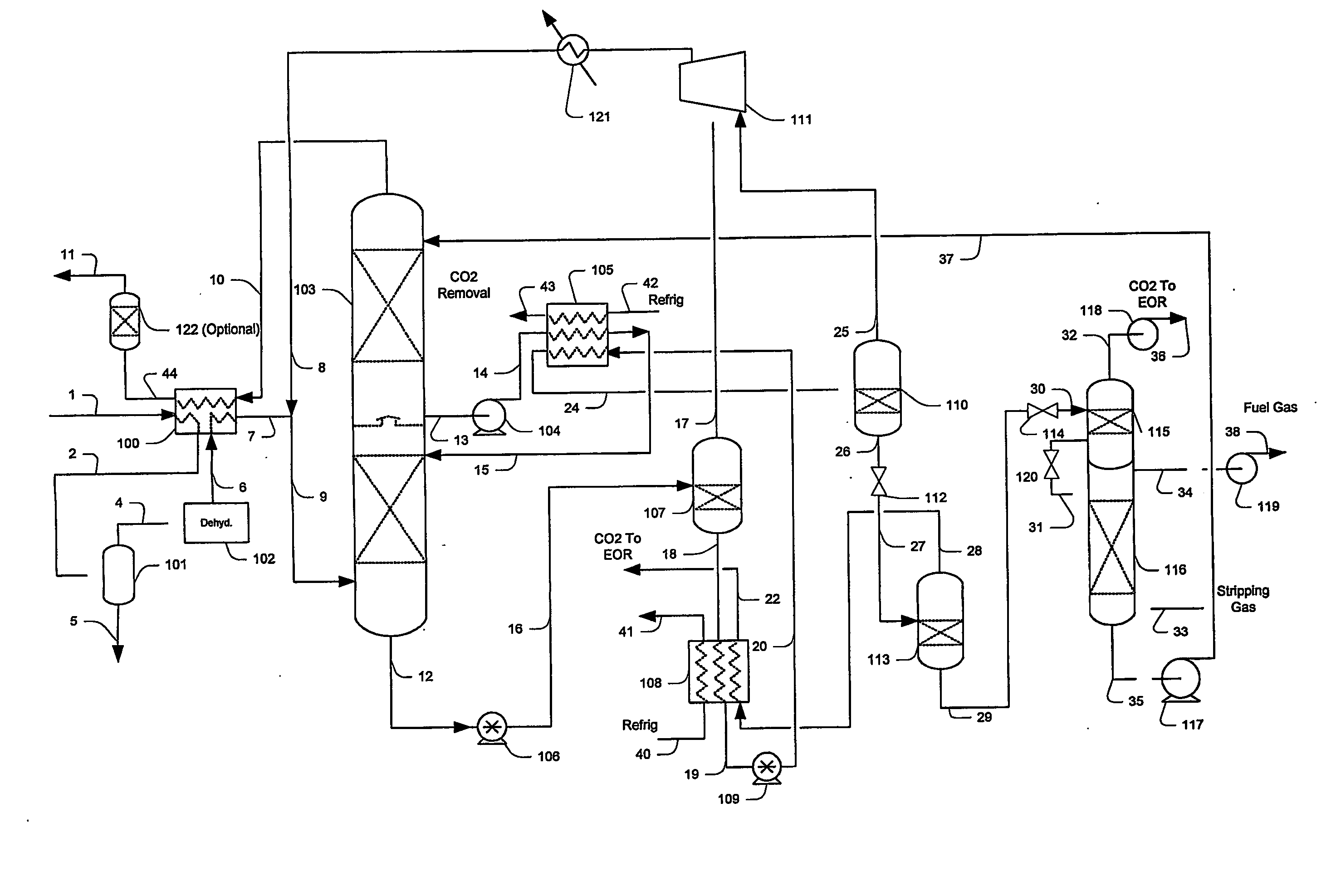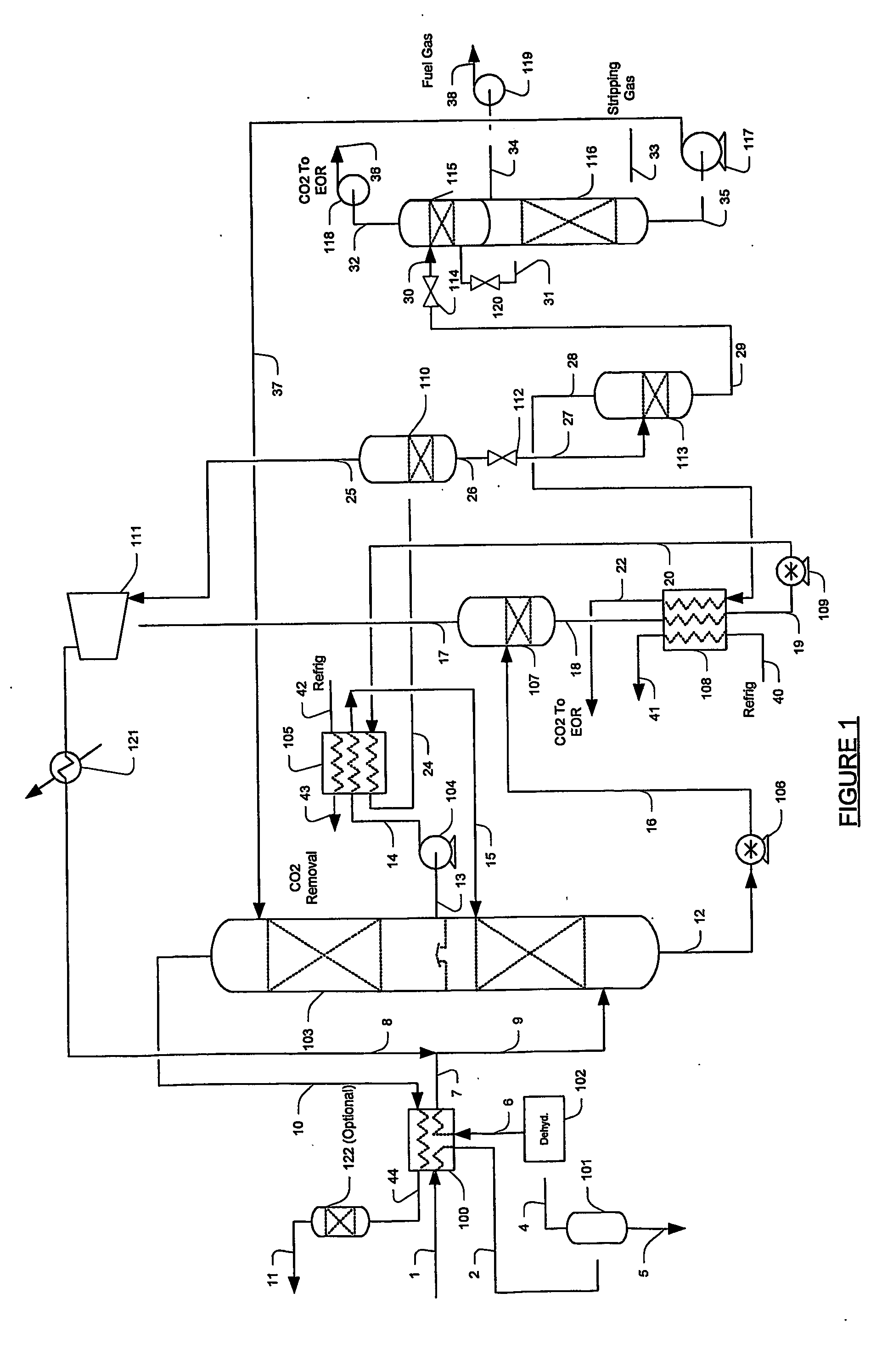Configurations and method for improved gas removal
a technology of gas removal and configuration, applied in the direction of gaseous fuels, liquid degasification, separation processes, etc., can solve the problems of recompression between stages, carbon dioxide removal to relatively low carbon dioxide content, and easy deterioration of membrane systems
- Summary
- Abstract
- Description
- Claims
- Application Information
AI Technical Summary
Benefits of technology
Problems solved by technology
Method used
Image
Examples
Embodiment Construction
[0018] The inventors have discovered that acid gases can be removed from a feed stream having high pressure and a carbon dioxide content of at least 5 mol % using methods and configurations comprising an absorber that operates in a gas phase supercritical region and receives a dehydrated feed gas comprising at least 5 mol % carbon dioxide, wherein a physical solvent absorbs at least part of the carbon dioxide in the absorber to form a carbon dioxide stream containing at least 95 mol % carbon dioxide.
[0019] In a preferred configuration as depicted in FIG. 1, a plant comprises a feed cooler 100 that cools feed gas 1 from 100° F. to 60° F., just above the feed gas hydrate point The cooling source for cooler 100 is provided by the product gas 10 (ie., the absorber overhead gas stream leaving the cooler via line 44), typically at −20° F. Water is removed from the cooled feed gas 2 in feed gas separator 101 via line 5 (An optional H2S scavenger bed may provides additional H2S removal). T...
PUM
| Property | Measurement | Unit |
|---|---|---|
| Pressure | aaaaa | aaaaa |
| Pressure | aaaaa | aaaaa |
| Pressure | aaaaa | aaaaa |
Abstract
Description
Claims
Application Information
 Login to View More
Login to View More - Generate Ideas
- Intellectual Property
- Life Sciences
- Materials
- Tech Scout
- Unparalleled Data Quality
- Higher Quality Content
- 60% Fewer Hallucinations
Browse by: Latest US Patents, China's latest patents, Technical Efficacy Thesaurus, Application Domain, Technology Topic, Popular Technical Reports.
© 2025 PatSnap. All rights reserved.Legal|Privacy policy|Modern Slavery Act Transparency Statement|Sitemap|About US| Contact US: help@patsnap.com



